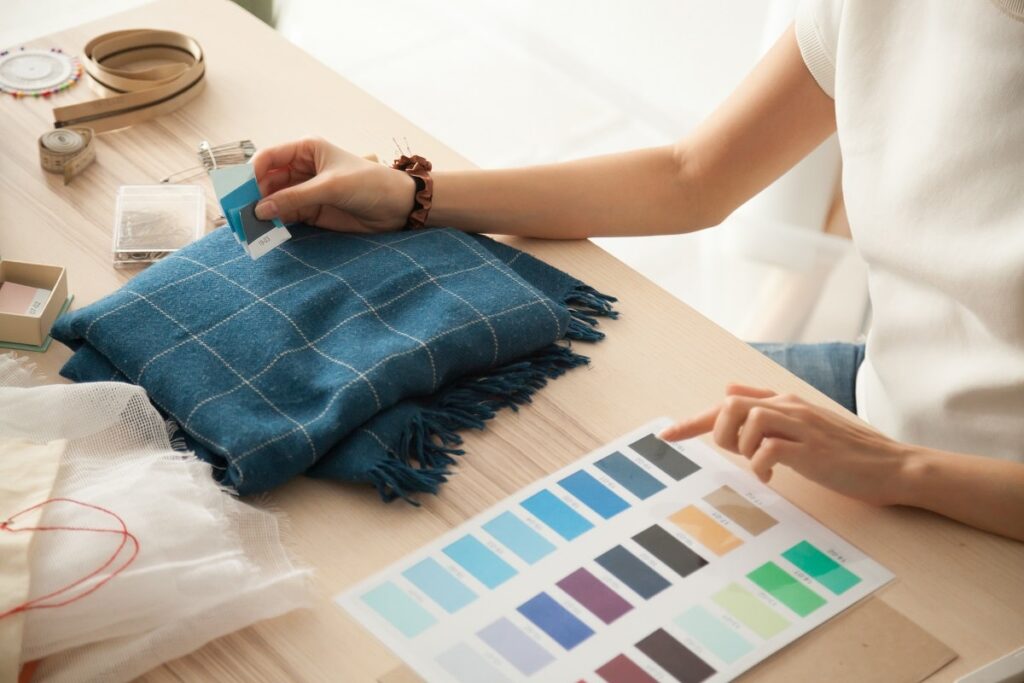As a stylist, understanding color theory is an essential skill that can elevate your work to new heights. Whether you’re selecting garments for a photoshoot, creating a cohesive wardrobe for a client, or designing a fashion collection, the right use of color can make all the difference. In this comprehensive guide, we will delve into the world of color theory, exploring its principles, terminology, and practical applications in the realm of fashion styling. By the end of this article, you’ll have a solid foundation in color theory that will help you create visually stunning and impactful looks.
The Basics of Color Theory
Color theory is the study of how colors interact with one another and how they can be combined harmoniously. It encompasses concepts such as hue, value, saturation, color temperature, and color schemes. Understanding these fundamentals is crucial for stylists as it allows them to make informed decisions when selecting and combining colors.
The Color Wheel
The color wheel is a visual representation of the relationships between colors. It consists of primary, secondary, and tertiary colors, arranged in a circular format. By familiarizing yourself with the color wheel, you can easily identify complementary, analogous, and triadic color schemes, which are widely used in fashion styling.
Color Harmony
Color harmony refers to the pleasing arrangement of colors in a composition. Achieving color harmony involves understanding the different color relationships and how they can be used to create visually appealing looks. Some popular color harmony techniques include monochromatic, complementary, and analogous color schemes.
The Psychological Impact of Color
Colors evoke emotions and can have a profound impact on how people perceive fashion. Understanding the psychological effects of different colors can help stylists create looks that convey specific moods or messages. For example, red is often associated with passion and energy, while blue evokes feelings of calmness and tranquility.
Color in Fashion Styling
In the world of fashion styling, color plays a vital role in creating a cohesive and visually appealing look. Stylists need to consider factors such as skin tone, hair color, and personal style when selecting colors for their clients. Additionally, understanding color psychology can help stylists create looks that align with the desired message or brand image.
Practical Tips for Working with Color
To effectively apply color theory in your styling work, here are some practical tips to keep in mind:
- Consider the occasion and context: Different colors are appropriate for different settings. Consider the event, the client’s personality, and the desired message when selecting colors.
- Experiment with color combinations: Don’t be afraid to step out of your comfort zone and try unconventional color combinations. Sometimes, unexpected pairings can create the most striking looks.
- Use color to highlight or downplay features: Colors can draw attention to certain areas or downplay others. Use this knowledge to create flattering looks for your clients.
- Pay attention to color trends: Fashion trends often influence color choices. Staying up-to-date with the latest color trends can help you create looks that are fresh and relevant.
Conclusion
Mastering color theory is an essential skill for stylists. By understanding the principles of color, the color wheel, color harmony, and the psychological impact of color, you can create visually stunning and impactful looks for your clients. Remember to experiment, stay informed about color trends, and use color to enhance your client’s personal style and message. With a solid foundation in color theory, you’ll be well-equipped to excel in the world of fashion styling.
Key Takeaways
- Understanding color theory is crucial for stylists as it allows them to make informed decisions when selecting and combining colors.
- The color wheel is a valuable tool for identifying complementary, analogous, and triadic color schemes.
- Achieving color harmony involves understanding the different color relationships and using them to create visually appealing looks.
- Colors have psychological effects and can be used to convey specific moods or messages in fashion styling.
- Consider factors such as skin tone, hair color, and personal style when selecting colors for clients.
- Experiment with unconventional color combinations and use color to highlight or downplay features.
- Stay up-to-date with color trends to create fresh and relevant looks.
To further enhance your understanding of color theory and its application in fashion styling, consider taking the FIT Fashion Styling Foundations online course and certificate program offered by Yellowbrick. This comprehensive course will provide you with the knowledge and skills needed to excel in the world of fashion styling, including a deep dive into color theory. With this valuable resource, you can confidently create visually stunning and impactful looks that will set you apart as a skilled and knowledgeable stylist.




